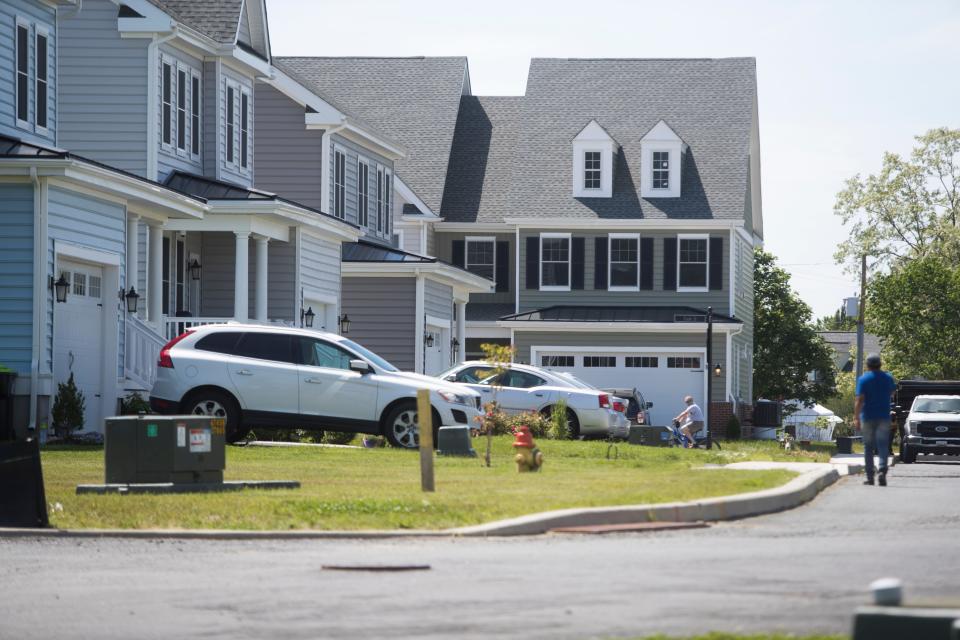The story of Fort DuPont includes the present day. Here's how | Opinion
Regarding "How Delaware's plan to resurrect Fort DuPont as a 'vibrant' riverfront haven went wrong," DelawareOnline, Feb. 17:
The recent article about the redevelopment of Fort DuPont highlighted the lowlights that the project has rightfully earned in past years. The most damaging outcome of the recent past at Fort DuPont has been the loss of public trust.
Building back the public’s trust has a long arc to it. It begins with tightening controls in response to past mismanagement. During last year’s legislative session, state Rep. Valerie Longhurst and state Sen. Nicole Poore sponsored HB 355, which addressed a series of reforms for the Fort DuPont Redevelopment and Preservation Corporation. All of those reforms have been implemented. This includes reforms directed at correcting poor property management practices and ensuring fiscal responsibility.
Subscriber exclusive: How Delaware's plan to resurrect Fort DuPont as a 'vibrant' riverfront haven went wrong
While we will always have the backdrop of recent history, we are also looking forward. The vision for Fort DuPont was to heal land that had been previously neglected. The site was first developed as a military site by the federal government in the 19th century. As a military site, the land was subjected to sometimes difficult uses; the adaptive re-use of military bases is challenging, but necessary. It is our responsibility to heal this land; leaving this burden to our children is unacceptable.
After World War II, the federal government declared the site surplus and the land and buildings were transferred to the State of Delaware. The state managed the lands with a variety of healthcare-related uses, including the site of the now-closed Governor Bacon Hospital. In 1992, Delaware State Parks created the Fort DuPont State Park on a portion of the land.

While the recent article thoroughly re-told the recent past, it was silent on the present day. Today, the initial phase of residential construction is complete. The Canal District includes a neighborhood of single-family and duplex homes. All homes in this phase have been sold and are occupied. Each home site has been raised out of the flood zone (an early well-placed concern of critics), and has access to the Branch Canal, the Delaware River, the Fort DuPont parade grounds, walking trails, and a state park. As part of Delaware City, all homes enjoy municipal services, utilities, and public safety protection.
Historic preservation is important to us. To date, the FDRPC has preserved and put back into service numerous historic structures, each of which are listed as contributing elements to Fort DuPont Historic District listed in the National Register of Historic Places. We have other preservation projects to address, including the Post Theater, a 250-seat movie venue; the Chapel, to be put in service as a community center; and other historic residences that need our attention.
The success of the project can not and should not be measured on economic impact alone. However, the economic value created in Delaware City by this redevelopment should not be ignored. New real estate sales have accounted for more than $15.0 million during the past five years.A proposed second phase of multi-family homes holds the promise of 130 new housing units for Delaware City.
The true value of the redevelopment of Fort DuPont is in healing land and returning it to use by the community. As the conservationist Aldo Leopold wrote, “When we see land as a community to which we belong, we may begin to use it with love and respect.” I agree.
When I began as executive director of FDRPC on July 1, 2022, I promised the board of directors that we would be ethical stewards. Our management of the resources provided for this project — natural, cultural, and financial — would be marked by honesty and transparency. We work toward that outcome in order to build back the public trust that has been placed with us.
Tim Slavin is executive director of the Fort DuPont Redevelopment and Preservation Corporation.
This article originally appeared on Delaware News Journal: The story of Fort DuPont includes the present day. Here's how

